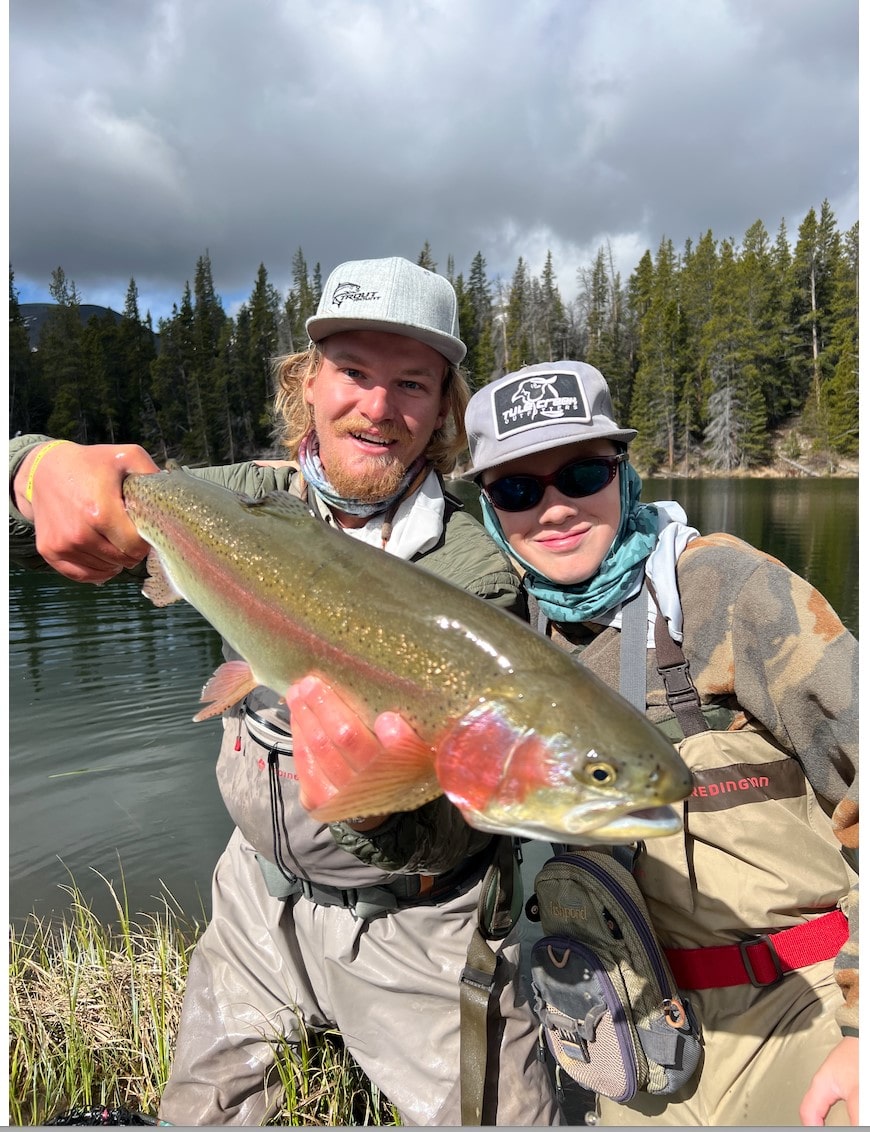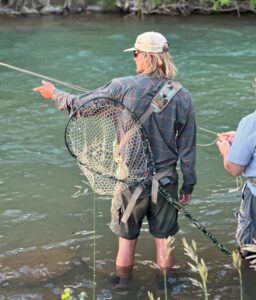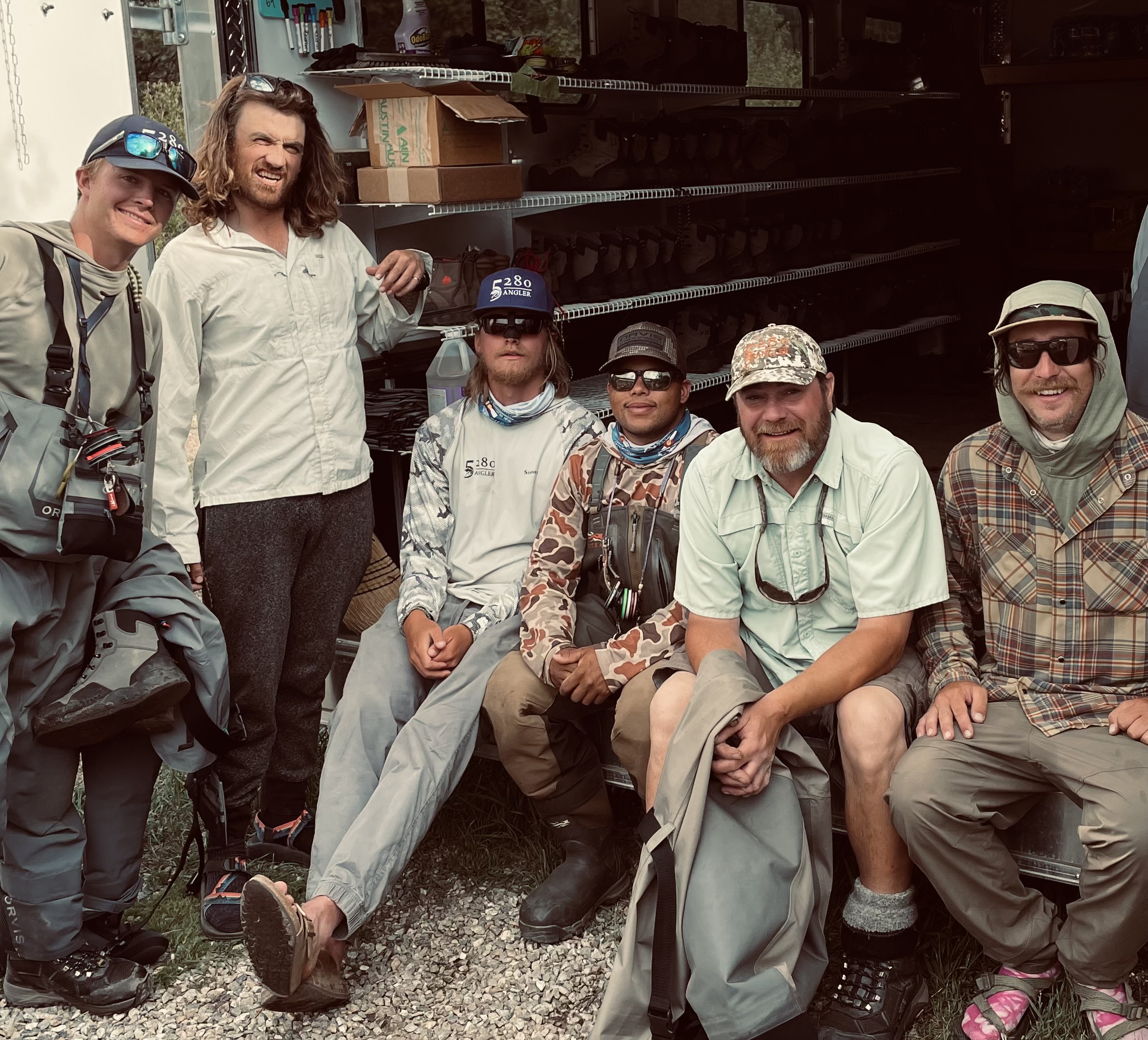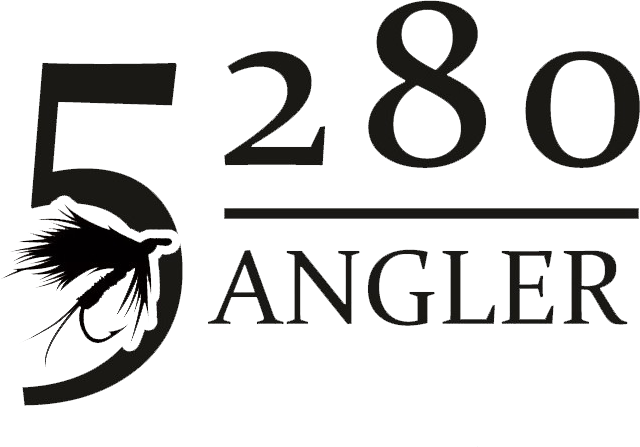
Three Lessons Learned During My Rookie Guide Season
5280 Angler fly fishing guide Tyler Wilson has a focused addiction to the pursuit of Colorado trout, and he completed his rookie season in 2023. Completely “hooked” on the sport himself, Tyler seeks to share his passion with guests through each cast, drift, set, and battle to the net. Sharing techniques, ethics, and a general love of the pursuit, Tyler knows his addiction has offered a career, lifestyle, and endless opportunities along the river. Tyler shares three lessons learned during his rookie guide season below.

1. Follow Your Instincts
As a younger angler and first-year guide in 2023, I learned that there was one key element to making daily decisions on the water: Trusting my instincts. Remembering similar scenarios and previous success and integrating that with the present situation is angler intuition. The amazing thing about being a guide is the daily opportunity to observe and build upon this instinct with each fly selection, rig, cast, drift, hookset and play to net. Instinct that comes from time on the water serves to make sense of the many variables that change along a river system from day to day. To unlock my angler instinct and share that with guests, I’ve learned to ask myself the question, “What is the river telling me to do?” That question will drive focused attention to many variables such as stream flow, water clarity & temperature, sunlight, seasonal recurrences, and insect activity. After making these observations, follow your instincts to make the next decision.

2. Critically Control the Depth of Your Nymph.
Though we fish year-round in Colorado, the stream flows vary dramatically based upon the season, local weather events, or municipal control of dam released water. The frequent changes in flow of water, as measured by cubic feet per second (CFS), result in trout movement, changes to insect activity, and changes in depth at any given river location. This all matters because in order to entice any given trout to strike a nymph, the well-presented fly must drop into their feeding zone. I have to gauge the sink ratio from the time the flies hit the water upstream of the fish. From the landing point, they will either descend perfectly into “the zone,” slide uneventfully over the trout’s head, or snag bottom. Changes in CFS will naturally change the rate of descent, and it’s critically important to pay attention to this. (Meaning, a given rig on one day may not work the same the next, even if the same bug life is present). I explain this crucial concept when demonstrating to guests why we roll cast a nymph rig upstream to a certain position to give our flies a chance to sink “just right” to the depth and pace that tempts the fish to strike. I learned the importance of helping each angler to understand the role the stream flow plays. In addition, this is particularly important when sunlight, insect activity, and water clarity allow for exciting sight nymphing to fish that have moved into the shallow riffles to feed. Too much weight (either via split shot or weight of the fly pattern) and you’ll never drift naturally, and too little will pass them by. Overall, paying attention to stream flows and sink rates, while helping my guests to do the same, has led to more confident presentations and positive connections with the trout.

3. Don’t Be Afraid to Go Small
“Big bait for big fish” or “Big flies for big trout” are some axioms that drift around fishing communities, and have even become dogmatic rules for some, leading some fly anglers to believe that smaller flies just won’t catch fish. Although some fish will be looking for a big meal on any given day, not all trout, even large trout, are accustomed or desire to eat big bugs or other large aquatic creatures. For example, an angler-friendly size 16 pheasant tail can be an awesome choice for an actively feeding rainbow trout on a cool summer morning. However, the reality is (especially on pressured tailwaters) that this common pattern just won’t cut it some days, and it may even be spooking a trout that has seen a million of them. So, back to lesson 1: trust your instincts. Watch for what is hatching or seine the river to see what bugs are in the drift. Notice especially what small insects are present. This act of observation may force you to try smaller baetis or midge patterns under an attractor such as a leech or worm. Downsizing may result in tight lines, and you maybe can ditch the big attractors altogether since the trout have a different agenda than you may have originally planned for. The need to downsize patterns is very common, and does have its pros and cons. The reality of fishing size 18 to 22 size barbless flies is that you may lose more fish than you land. However, do not be discouraged by this because once you understand how to land fish on smaller flies it makes you a better angler entirely. Helping novice anglers to become successful at playing trout on small flies was a learning curve for me during my rookie guide season. I encourage new angles and rookie guides to branch out and confidently fish smaller, more natural flies. Your anglers will appreciate the increase in hookups and high fives at the end of the day.
Conclusion
Looking back on the 2023 season, I was humbled and learned many lessons as a rookie guide. I look forward to the 2024 season with 5280 Angler, a Colorado guide service of which I am proud to be a member. I enjoy working with this outfitter due to the excellent public and private waters we guide, my professional guide teammates, and our amazing guests. I love the experience as much as those who fish with us!
Ed’s Note: If you’d like to fish with Tyler or any of our Orvis Endorsed guides in 2024, please CONTACT US to book your adventure on the river!

